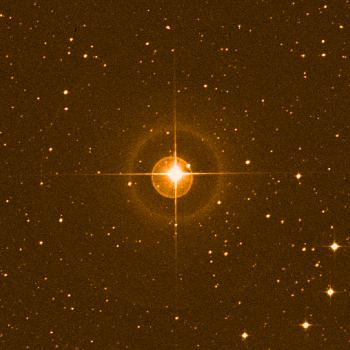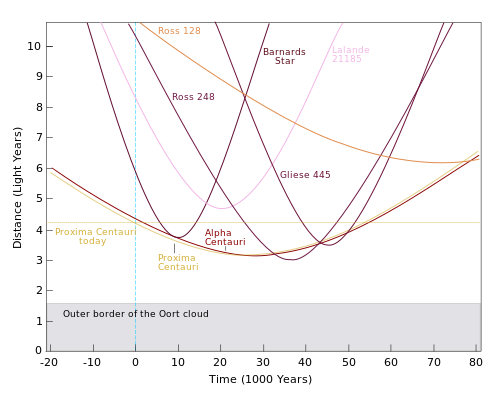It is kind of fantastic that the very closest star to the Sun, Proxima Centauri, is so faint that you can't even see it with a normal pair of binoculars. According to my software, the luminosity of Proxima Centauri is 0.00005500 ± 0.000000340 times that of the Sun, which would make Proxima Centauri roughly one part out of
15,000 as bright as the Sun. Or, to put it differently, image that you were to divide the visible disk of the Sun into 15,000 equal parts. Then Proxima Centauri would shine as brightly as
one of those 15,000 parts.
Admittedly the software I use measure the brightness of stars in relatively blue wavelengths. The V wavelength it measures corresponds to 505 nm, which is definitely bluer than the "normal V", which is closer to 550 nm (or so I think). That suggests that Proxima, a cool and therefore reddish star, would be brighter if we measured it in the "normal V" instead. It will definitely be still brighter if we measure it in infrared wavelengths, which is to say that its bolometric, total, luminosity is not as feeble as only one part out of 15,000 of the luminosity of the Sun.
Still, it's amazing that the very closest star to the Sun is so faint that you need a telescope to see it. It makes me wonder if perhaps there is something out there which is even fainter and even closer - something with a respectable mass, much, much more massive than Jupiter, but with such a feeble luminosity that we simply haven't discovered it yet. (Please note that I'm not talking about something like the infamous "Nemesis" or something like that. A large and massive planet or a brown dwarf that was really close to us would have been detected by now, I'm sure of that.)
And of course, it is also amazing that the second closest star to the Sun, Alpha Centauri A, is so very similar to the Sun. I don't know where you will find the next early G-type main sequence star in the sky. Undoubtedly that star is sufficiently far away to look faint enough that it does not in any way call attention to itself.

18 Scorpii, a near-solar twin, whose luminosity is 1.042 ± 0.026 times that of the Sun. Photo: ESO Online Digitized Sky Survey. 18 Scorpii is 45.74 ± 0.57 light-years away. Its "normal V" magnitude is 5.49, which means that you need good eyes to see it at all. Its B-V is 0.652 ± 0.009. This is almost exactly the same color as the Sun, which is to say that the very yellow color in the picture above isn't "true-color".
Ann
 Alpha Centauri: The Closest Star System
Alpha Centauri: The Closest Star System


